Discover 20 hidden attractions, cool sights, and unusual things to do in Lucca (Italy). Don't miss out on these must-see attractions: San Michele in Foro, Piazza dell'Anfiteatro, and Torre Guinigi. Also, be sure to include Palazzo Guidiccioni in your itinerary.
Below, you can find the list of the most amazing places you should visit in Lucca (Tuscany).
Table of Contents
San Michele in Foro
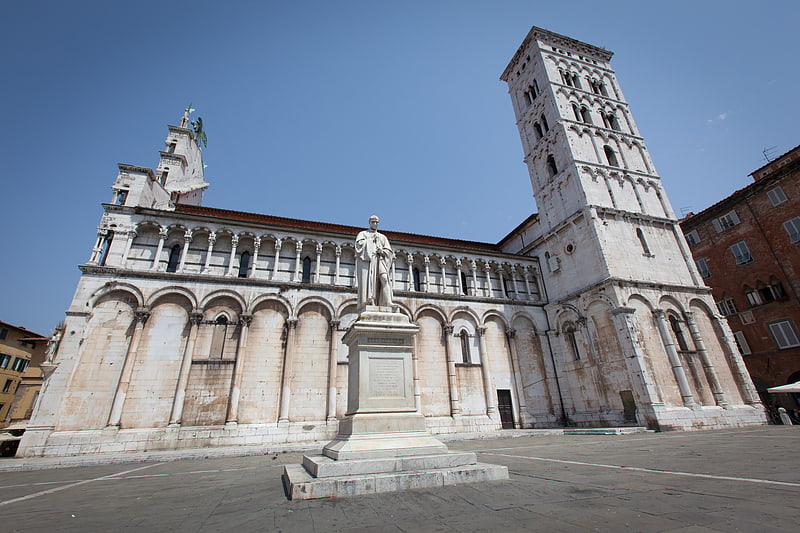
1100s church with soaring ornate facade. San Michele in Foro is a Roman Catholic basilica church in Lucca, Tuscany, central Italy, built over the ancient Roman forum. Until 1370 it was the seat of the Consiglio Maggiore, the commune's most important assembly. It is dedicated to Archangel Michael.[1]
Address: Piazza San Michele, 55100 Lucca
Piazza dell'Anfiteatro
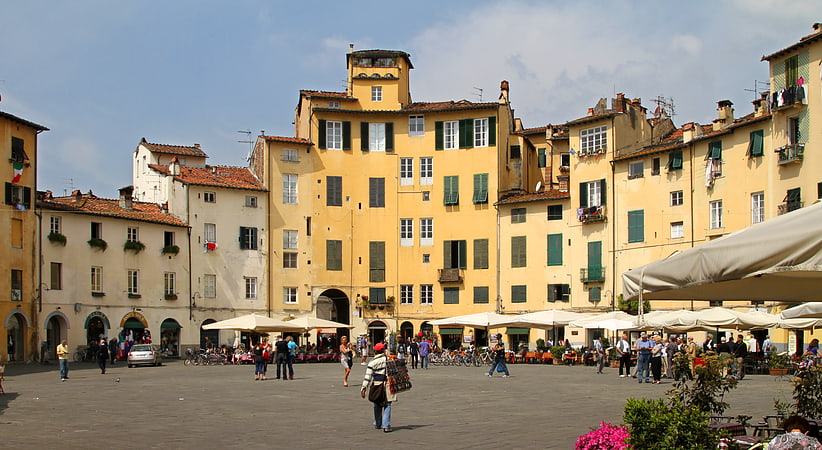
Historical landmark in Lucca, Italy. Piazza dell'Anfiteatro is a public square in the northeast quadrant of walled center of Lucca, region of Tuscany, Italy. The ring of buildings surrounding the square, follows the elliptical shape of the former second century Roman amphitheater of Lucca. The square can be reached through four gateways located at the four vertices of the ellipse. A cross is carved into the central tile of the square with the arms pointing to the four gateways of the square.[2]
Torre Guinigi
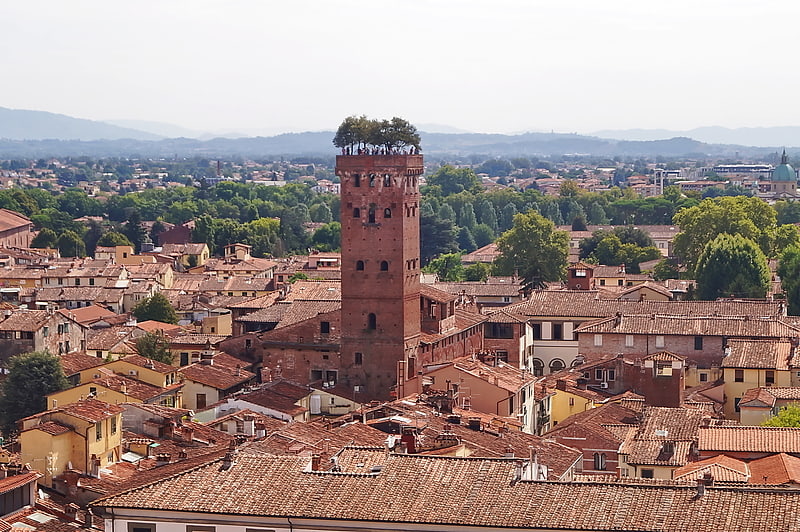
Medieval tower topped by holm-oak trees. The Torre Guinigi is a tower in Lucca, Tuscany, central Italy. It is a typical example of local Romanesque-Gothic architecture. The height of the tower is 45 meters with a total of 233 steps to reach the top.
The tower dates from the 1300s, when a number of wealthy families were building bell towers within the walls of Lucca as status symbols. It is one of the few remaining towers within the walls. It is known for the tall trees (holm oaks) growing on top of the tower - The kitchen was originally on the floor below with the rooftop serving as a kitchen garden.
The tower was donated to the local government by the descendants of the Guinigi family.[3]
Address: Via Sant'Andrea, 55100 Lucca
Palazzo Guidiccioni
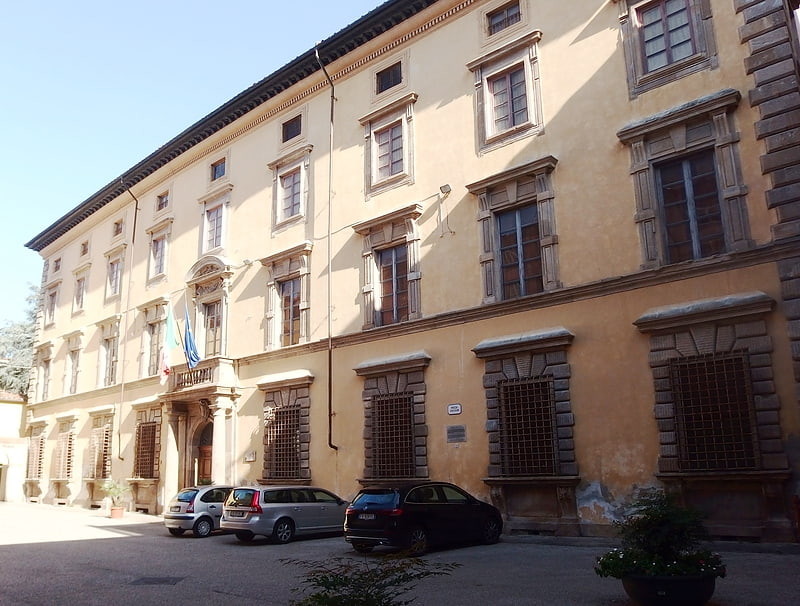
The Palazzo Guidiccioni is a 16th-century urban palace located in Lucca, region of Tuscany, Italy. The Guidiccioni had owned the site in the 8th century. Construction if the building we see today is attributed to Vincenzo Civitali. The palace was acquired by the government in 1822.[4]
Holy Face of Lucca

Also known as: Volto Santo di Lucca
Sculpture created in 1484. The Holy Face of Lucca is an eight-foot-tall, ancient wooden carving of Christ crucified in Lucca, Italy. Medieval legends state that it was sculpted by Nicodemus who assisted St. Joseph of Arimathea in placing Christ in his tomb after the crucifixion. The same legends placed its miraculous arrival in Lucca to AD 782.
Radiocarbon dating of both wood and canvas places it between 770–880 AD, which corresponds to the Legend of Leobino according to which the Holy Face arrived from Palestine to Lucca in 782 (another copy says 742).
The Holy Face is located in the free-standing octagonal Carrara marble chapel (the tempietto or "little temple"), which was built in 1484 by Matteo Civitali, the sculptor-architect of Lucca, to contain it. The tempietto stands in the left-hand aisle of the cathedral of San Martino in Lucca.
Copies of a similar size from the 12th century are found widely spread across Europe. These include the Cross of Imervard in the Brunswick Cathedral at Braunschweig, Germany, the Holy Face of Sansepolcro at Sansepolcro, Italy and possibly the Batlló Crucifix of Barcelona, Spain. The Holy Face is also depicted on a 14th-century gothic fresco in a Lutheran church in Štítnik, Slovakia.
"By the Holy Face of Lucca" was a phrase often used by William Rufus when swearing to perform an act or deed during his reign as King of England.[5]
Basilica of San Frediano

Also known as: Basilica di San Frediano
1100s church with striking mosaic facade. The Basilica of San Frediano is a Romanesque church in Lucca, Italy, situated on the Piazza San Frediano.[6]
Address: Piazza S. Frediano, 16, 55100 Lucca
Lucca Cathedral
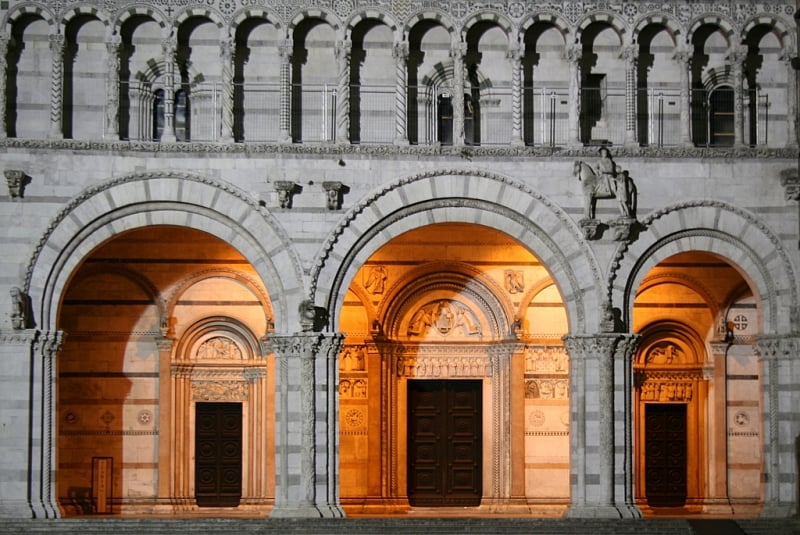
Also known as: Cattedrale di San Martino
Gothic edifice with a belfry and museum. Lucca Cathedral is a Roman Catholic cathedral dedicated to Saint Martin of Tours in Lucca, Italy. It is the seat of the Archbishop of Lucca. Construction was begun in 1063 by Bishop Anselm.[7]
Address: Via Duomo, 55100 Lucca
Torre delle Ore
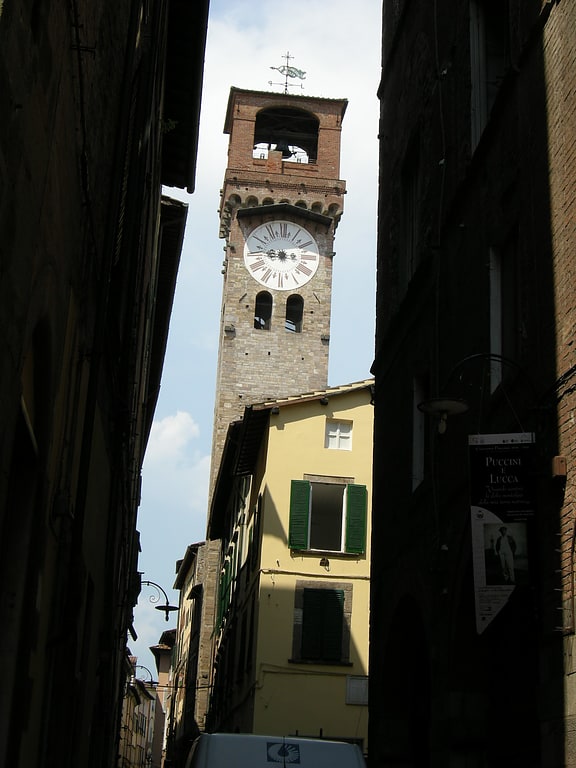
Also known as: Torre delle ore
Monument in Lucca, Italy. The Torre delle Ore or Torre dell'Orologio is a clock-tower or turret clock located on Via Fillungo in central Lucca, region of Tuscany, Italy.[8]
Address: Via Fillungo, 55100 Lucca
Ducal Palace
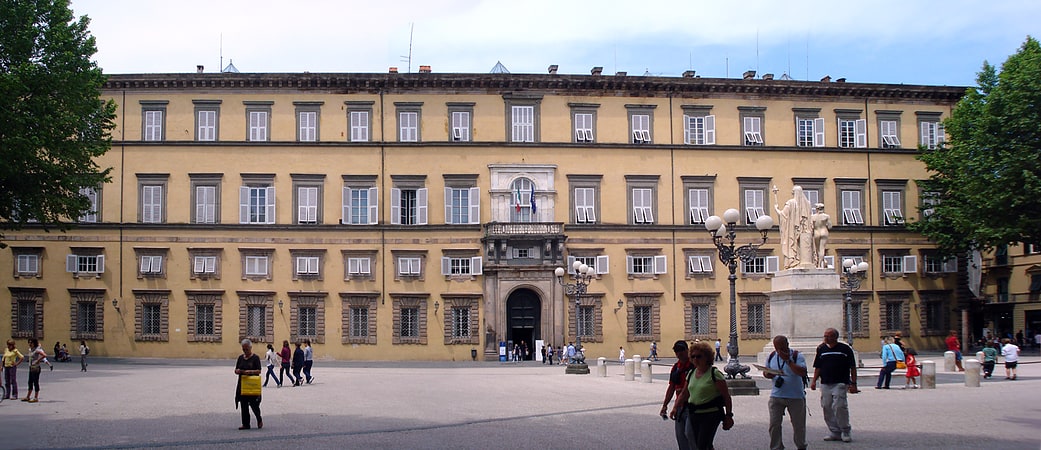
Also known as: Palazzo Ducale
Tourist attraction in Lucca, Italy. The Ducal Palace is a palace in Lucca, Tuscany, central Italy.[9]
Address: Piazza Napoleone, Lucca
Orto Botanico Comunale di Lucca

Also known as: Orto botanico comunale di Lucca
Botanical garden in Lucca, Italy. The Orto Botanico Comunale di Lucca is a botanical garden located at Via del Giardino Botanico, 14, Lucca, Italy, and operated by the city. It is open daily during the warmer months, and weekday mornings off-season. An admission fee is charged.
The garden was established in 1820 by Marie Louise, Duchess of Parma, and contains a number of mature plantings of botanical interest. Its site is roughly triangular, set within a corner of Lucca's city wall, and organized into two main sections. One contains the gardens proper with an arboretum, pond, and smaller plantings; the other contains the greenhouse, botanical school, and laboratories. The Museo Botanico "Cesare Bicchi" contains a herbarium and archive.[10]
Address: Via del Giardino Botanico, 14, 55100 Lucca
Museo Nazionale di Villa Guinigi
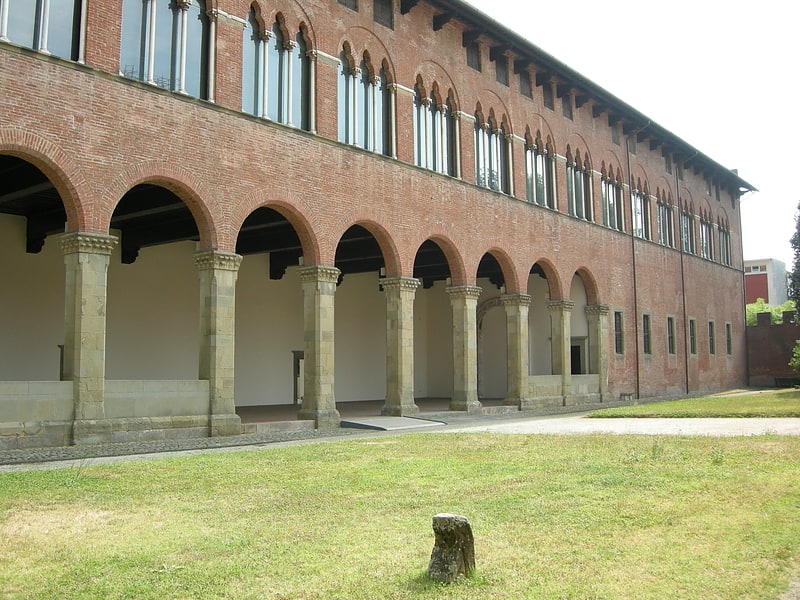
Also known as: Museo nazionale di Villa Guinigi
Museum in Lucca, Italy. The Museo Nazionale di Villa Guinigi is the main art museum hosting the pre-modern art collections owned by the city of Lucca, Italy.
The museum is located in a refurbished villa on Via della Quarquonia, completed in 1418 for Paolo Guinigi, ruler of Lucca until 1430. After his death, the building was confiscated by the republic, and it has served various purposes over the years. Only in 1924 was it selected to house the art collection, which until then was housed in the Palazzo Pubblico. In 1948 it was donated to the Italian state, which carried out a more organized preservation campaign and at the same time rearranged the collection, subsequently distributing it between this villa and the Palazzo Mansi.
The late-Gothic building was constructed from 1413 to 1418 as a Villa di Delizia. It has an imposing brick façade with central ground-floor portico. Once elaborately decorated by Guinigi, it now houses collections of mainly the ancient, medieval, renaissance, baroque, and neoclassic periods.[11]
Address: Via della Quarquonia, 4, 55100 Lucca
Palazzo Pfanner
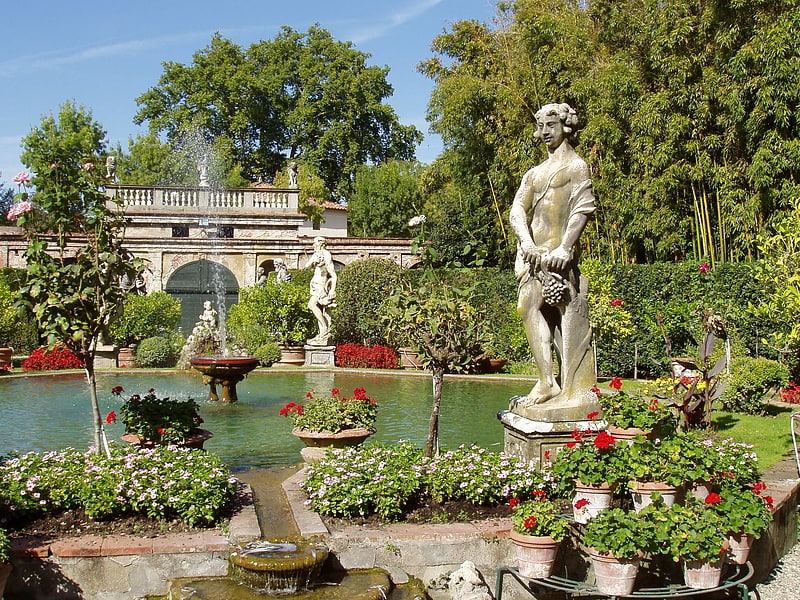
Palazzo in Lucca, Italy. Palazzo Pfanner is a palace and a garden in Lucca, Italy, now converted into a museum of art and artifacts. Originally known as the Palazzo Controni, the building dates to 1667, and is notable mainly for its fine garden, attributed to Filippo Juvarra, and an interesting external stairway with loggia.
Its principal salon contains frescoes by Scorsini and De Santi (early to mid 18th century), as well as a collection of surgical instruments gathered by Dr. Pietro Pfanner (1864–1935).[12]
Address: Via degli Asili, 33, 55100 Lucca
San Tommaso
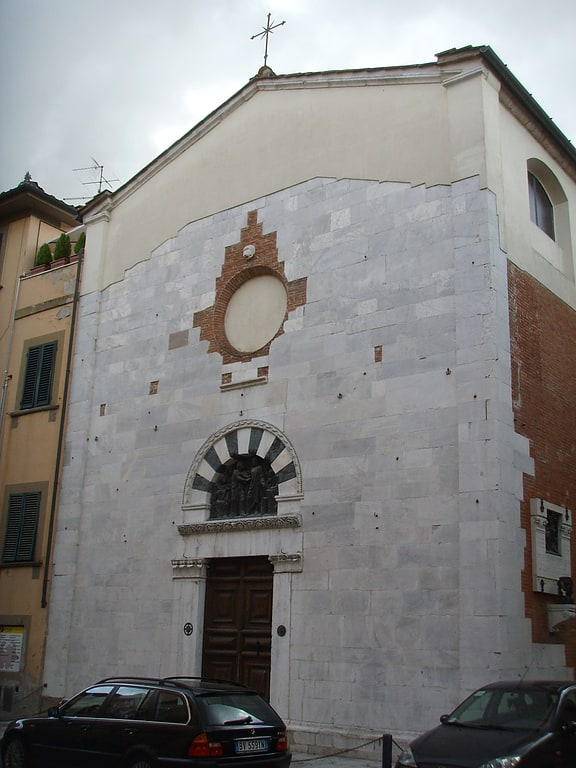
San Tommaso or San Tommaso in Pelleria is a Romanesque- style, Roman Catholic church located on Piazza of the same name in central Lucca, region of Tuscany, Italy.[13]
Address: Via S. Tommaso, 15, 55100 Lucca
San Giusto
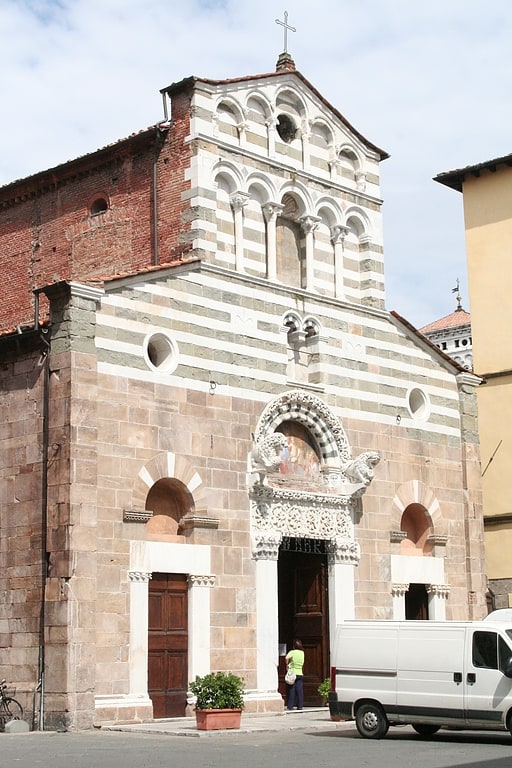
Catholic church in Lucca, Italy. San Giusto is a church in Lucca, Tuscany, central Italy. Built over a pre-existing church, it dates to the second half of the 12th century. Named after 12th century Italian, Giustino Salce. This is where its name "San Giusto" comes from.[14]
Address: Corte del Biancone, 5, 55100 Lucca
Teatro del Giglio
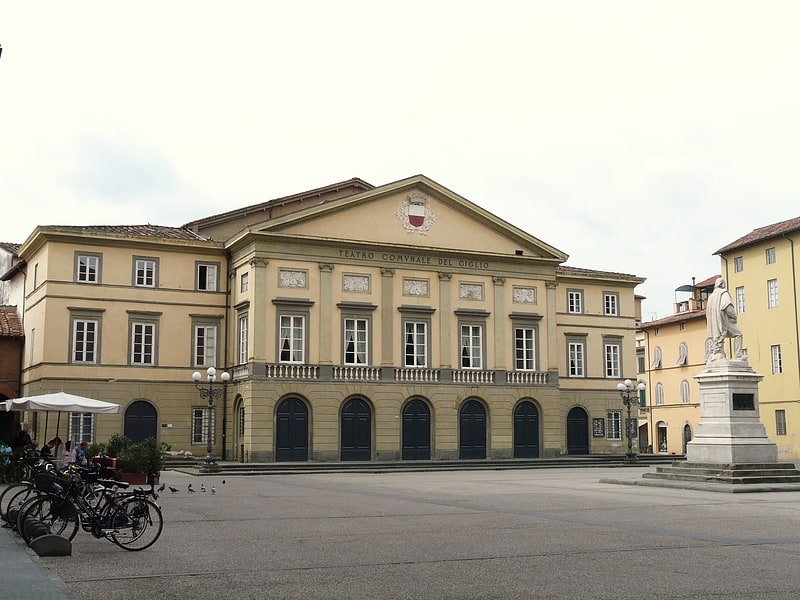
Theater in Lucca, Italy. The Teatro del Giglio is the historic city theater and opera house located in Piazza del Giglio #13 and #15 in the center of Lucca, region of Tuscany, Italy.[15]
Address: Via del Giglio, 55100 Lucca
St. Francis of Assisi Church
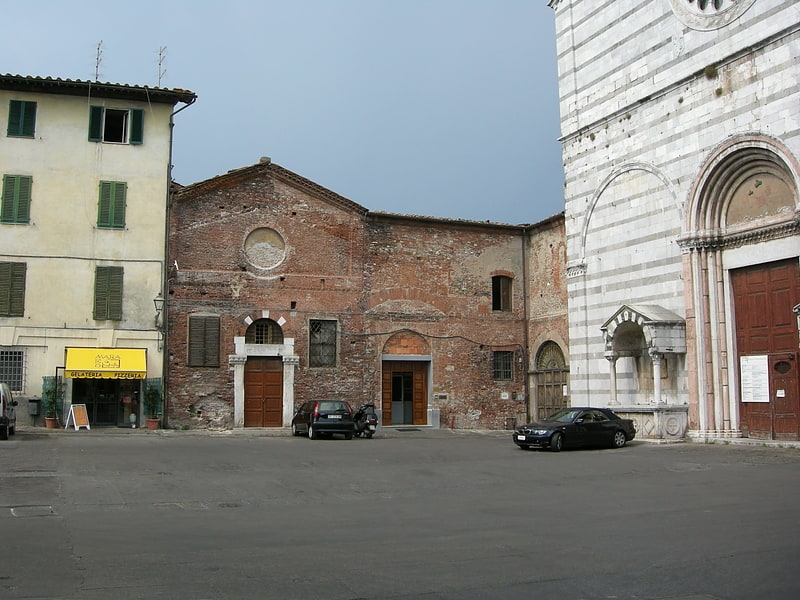
Also known as: Chiesa di San Francesco
Historic church with medieval tombs. San Francesco is a former Gothic-style Roman-Catholic church and monastery located in Piazza San Francesco in central Lucca, Tuscany, Italy. Since its restoration, it is home to IMT School for Advanced Studies Lucca, a superior graduate school.[16]
Address: Piazza S.Francesco, 55045 Lucca
Museo Nazionale di Palazzo Mansi
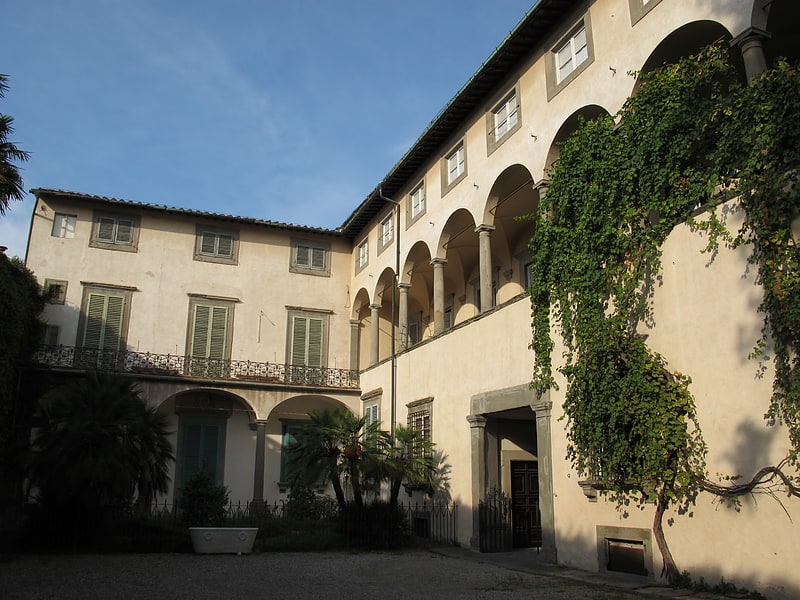
Also known as: Museo di palazzo Mansi
Museum in Lucca, Italy. The Museo Nazionale di Palazzo Mansi is one of the two main art museum hosting tapestry collections and mainly post-19th century art collections owned by the city of Lucca, Italy. The collection is displayed in the Baroque palace, formerly belonging to the Mansi family, and located in central Lucca. Many of the original room decorations remain in place.
The Palace was first erected at the site of a few earlier tower-houses bought in 1616 by the Lucchese merchant of silk Ascanio Mansi and his descendants. While the facade retains earlier Renaissance window features, between 1686 and 1691, Ascanio's son Raffaello employed the architect Raffaello Mazzanti to further renovate the now palace, and the piano nobile rooms acquired the present decoration and a grand staircase access. The cooler ground floor rooms were turned into a summer apartment.
In the second half of the 18th century, Luigi Mansi pursued further refurbishing. The Mansi family retained prestige in the early 19th century; Raffaele Mansi and Camilla Parensi had been appointed courtiers to Elisa Bonaparte and Felice Baciocchi. Raffaello Mansi Orsetti, who died in 1956, was the first to display the art collections to the public. In the mid-1960s his children sold the palace to the state, which has converted into a National Museum of arts and tapestries.
The interiors house a highly decorated bedroom alcove with gilded caryatid columns flanking the portal.[17]
Address: Via Galli Tassi, 43, 55100 Lucca
IMT School for Advanced Studies Lucca

Research institution in Lucca, Italy. IMT School for Advanced Studies Lucca is a public research institution and a graduate school located in Lucca, Italy. It was founded in 2005 under the name of IMT Institute for Advanced Studies, where the acronym IMT stands for "Institutions, Markets, Technologies”. The School is part of the Italian superior graduate school system and its main Campus is located in the San Francesco Complex within the historic city walls of Lucca.
As an institution for advanced studies, IMT School hosts researchers who carry out methodological research, held to high scientific standards, leading to the development of new knowledge.
Its international advisory board includes a number of prominent scientists, including Giulio Tononi, Alfio Quarteroni and Adina L. Roskies.[18]
San Salvatore
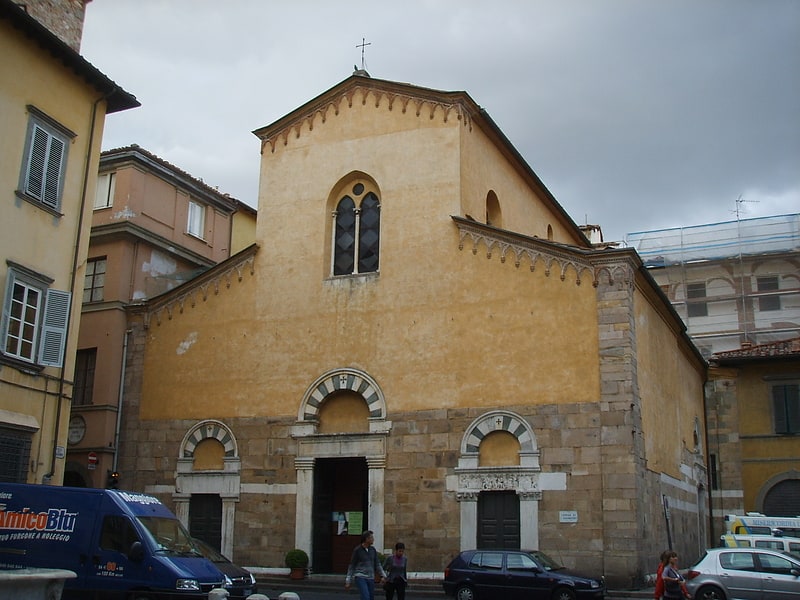
San Salvatore in Mustolio is a Romanesque- style, Roman Catholic church located on Piazza of the same name in central Lucca, region of Tuscany, Italy.[19]
Address: Piazza S. Salvatore, 7, 55100 Lucca
Santa Maria Forisportam
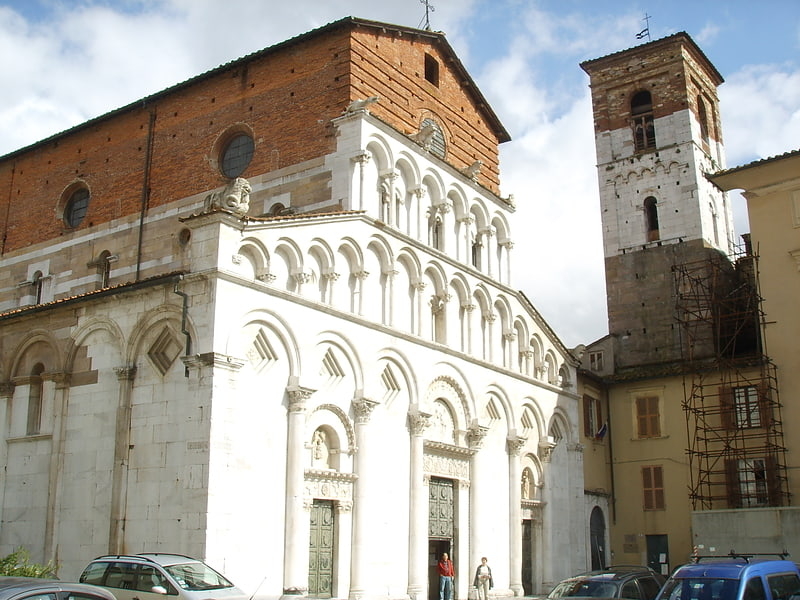
Church in Lucca, Italy. Santa Maria Forisportam, also called Santa Maria Bianca, is a Romanesque-style, Roman Catholic church located on piazza Santa Maria Bianca in Lucca, region of Tuscany, Italy.[20]
Address: Vicolo Tommasi, Lucca